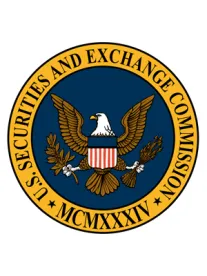As we summarized previously, the Securities and Exchange Commission (SEC) recently amended certain disclosure rules as part of its longer-term initiative to update, harmonize, and modernize Regulation S-K, the SEC’s primary nonfinancial disclosure regime. These amended rules include a new “human capital resources” disclosure requirement as part of the narrative description of the company’s business (Item 101(c)), which applies to domestic issuers and foreign private issuers (other than smaller reporting companies). Specifically, while the overall goal of the amendments was to move from a prescriptive to a more principles-based reporting scheme, human capital management (HCM) has been added to the list of topics that a company must discuss in its annual filings and certain registration statements, to the extent that such disclosure is material to an understanding of the company’s business. These amended rules take effect on November 9, 2020.
This new disclosure requirement reflects how the economic landscape has evolved over the past few decades, with human capital becoming an increasingly important resource for most companies. We expect that few companies will be able to avoid this disclosure requirement entirely by taking the position that their management of human capital is not material to their business (and thus not important to an investor’s decision-making). In his published remarks delivered at the open meeting at which these rules were adopted, SEC Chairman Jay Clayton noted, “I cannot remember engaging with a high-quality, lasting company that did not focus on attracting, developing and enhancing its people. To the extent those efforts have a material impact on their performance, I believe investors benefit from understanding the drivers of that performance.”
Investor focus on HCM as well as on a wider scope of nonfinancial environmental, social, and governance (ESG) metrics and initiatives has increased dramatically in recent years. This amended rule, adopted by a 3–2 vote of the SEC commissioners, is much narrower than many proponents had wanted, focusing solely on HCM rather than addressing a broader array of ESG concerns. Many of those proponents, including the two dissenting SEC commissioners, were also disappointed that the new rule lacks mandatory metrics or an overarching framework, arguing that these features would enhance comparability of HCM, both over time and across companies.
As a practical matter, the absence of a prescriptive framework means that each company will have to determine how best to address this new disclosure requirement given the realities of its own workforce and HCM processes. This alert provides an overview of the required disclosure as well as specific steps we recommend that our clients consider as they prepare to comply with this new rule.
Text of Amended Rule. Under amended Item 101(c) of Regulation S-K, to the extent material to an understanding of the business, a company must provide, among other things:
A description of the registrant’s human capital resources, including the number of persons employed by the registrant, and any human capital measures or objectives that the registrant focuses on in managing the business (such as, depending on the nature of the registrant’s business and workforce, measures or objectives that address the development, attraction and retention of personnel).
The SEC did not define human capital, noting that there are a variety of possible definitions that may be tailored to a company’s specific circumstances and objectives and that those definitions may evolve over time. However, the SEC did provide some examples of the types of “measures” that a company may find appropriate to use and disclose, such as the number of full-time versus part-time employees, the number of independent contractors and contingent workers, and employee turnover. These enumerated measures were among those that proponents argued should have been included as mandatory metrics in the final rule.
Prior to this amendment, the rule required that each company provide its total number of employees (subject, of course, to the overarching requirement that the company provide a narrative of the material aspects of its business). Notably, companies must continue to disclose that basic demographic information, which, as shown in the rule excerpt and as discussed above, is the only mandatory HCM metric in the amended rule.
Timing. As discussed in our previous client alert, the first time most companies will be required to provide this new HCM disclosure under revised Item 101 is in their next annual report (for large accelerated filers with a calendar-year fiscal year-end, the Form 10-K will be due no later than March 1, 2021). Companies that file certain registration statements prior to their next annual report may need to disclose this information earlier.
Recommended Steps. We expect that there will be significant variation in how companies tackle this new requirement. In addition, while many larger companies have been working with ESG policies and metrics for several years (and may already issue a separate ESG report that addresses HCM), this may be the first time some companies have considered the issue. We recommend taking the following steps to prepare:
- Assemble the team. Determining the allocation of responsibilities is an important first step. While SEC disclosure is typically handled by the legal department (often together with the financial reporting group and outside counsel), human resources will play a key role in crafting this disclosure, similar to the CEO pay ratio. As many institutional investors have their own expectations regarding HCM disclosure, it may be important to include investor relations in the discussion as well.
- Decide how to define and describe the company’s “human capital.” Given that the amended rule does not define human capital, the threshold question for companies will be how to define it. Most companies have already done significant work in gathering information about, and preparing narrative disclosures describing, their workforce, whether in response to the CEO pay ratio rule or for ESG reports. Definitions will vary by industry and workforce profile, and we recommend that companies benchmark their own disclosure against that of their peers.
- Take inventory of the metrics that are currently being tracked to determine the company’s HCM focus. What HCM metrics are currently being tracked? What goals or targets are being set for the executives in charge of the human resources function? What HCM reports are generated for senior management and the board? The answers to these questions will vary based on the industry and the company’s unique human capital profile. Some key HCM areas of focus include workforce composition; workforce compensation and pay equity; workforce cost; company culture; workforce diversity and inclusion; talent acquisition, retention, and advancement; workforce turnover; development, training, and productivity; and workforce well-being, health, and safety.
- Consider which metrics and frameworks are used by key constituents, including the company’s largest investors. Given the increased focus on ESG, many institutional investors and advisory groups have already developed their own philosophies and frameworks for evaluating ESG initiatives, including HCM strategies. We recommend that companies familiarize themselves with those used by their key constituencies, especially their largest institutional investors. For example, in August 2020, State Street Global Advisors published an open letter asking that companies in its portfolio of investments disclose, among other things, certain demographic information regarding their human capital as captured by the EEOC’s annual EEO-1 Survey.
- Determine which HCM metrics used by management are material to an understanding of the company’s business. Given the considerable amount of human capital information collected by companies, not all HCM metrics tracked by a company will be material to an understanding of its business. Once the company has surveyed its own HCM metrics and those tracked by its key constituents, we recommend refining the list by determining which ones are key to the company’s overall corporate strategy and mission and can be measured consistently and accurately over time.
- Identify gaps in current processes and determine whether any new processes should be adopted. Once the universe of key HCM metrics has been defined, companies should evaluate their current HCM processes and determine what changes, if any, need to be made and whether any new processes should be adopted in order to elicit necessary information and reports or to increase accuracy of information generated.
- Consider timing and extent of board involvement. For any company that has not been providing regular HCM data or reports to its board of directors, we recommend starting the process of socializing this new requirement with the board sooner rather than later. Many companies have already allocated responsibility for ESG oversight to one or more board committees, with some companies creating a separate standing sustainability or corporate responsibility committee. Whether the full board or any specific committee should oversee ESG generally will depend on the company’s particular circumstances. Regardless, input from the compensation committee on HCM disclosure will be important given the significant interplay between HCM and executive compensation. To the extent that more than one committee is involved, we recommend thinking through how to manage that oversight for maximum efficiency and effectiveness while ensuring sufficient coverage of the relevant issues.
- Consider how the disclosure will evolve over time. Following adoption of these amendments, SEC Division of Corporate Finance Director Bill Hinman opined publicly that he expects to see companies maintain metrics from one period to another or to prominently disclose any changes to those metrics (presumably, identifying any metrics that changed and explaining the rationale behind the changes). As a result, we recommend that companies take a cautious but thorough approach to their initial disclosures, considering whether and how chosen metrics can be consistently and accurately measured over time.
- Remember to harmonize the message across all public documents (not just SEC filings). We expect that this disclosure will draw interest from a variety of constituencies, including investors, the company’s workforce, and perhaps the press. Companies should ensure that they are communicating their HCM philosophy consistently across all public documents, not just SEC filings. This includes the CEO pay ratio disclosure, any existing ESG reports, their hiring and recruiting website, internal communications such as employee handbooks, marketing materials, and investor presentations.
- Be mindful of the reach of the liability and antifraud provisions of the federal securities laws. As a reminder, documents filed with the SEC are subject to the civil liability and antifraud provisions of the federal securities laws. Companies should exercise caution when using information prepared for other purposes (such as the company’s website or any ESG reports) in their SEC filings, whether directly or by hyperlink reference to an external document. We recommend that companies ensure that their existing disclosure controls and procedures are sufficient to confirm the accuracy of any ESG disclosure used in this manner, including the new HCM disclosure.
The overarching goal behind this new requirement is to help investors understand a company’s HCM through the eyes of its management. Although the amended rule is principles-based, SEC Chairman Clayton indicated that he expects it to elicit “meaningful qualitative and quantitative disclosure, including, as appropriate, disclosure of metrics that companies actually use in managing their affairs.” Finally, given the growing interest in ESG, we anticipate that compliance with this new SEC rule narrowly focused on HCM will meet only the baseline expectation of many investors. Companies that have not yet adopted broader ESG policies and disclosures should think critically about how to respond to those concerns in a comprehensive way.
Liam B. Doolin contributed to this article.






 />i
/>i

